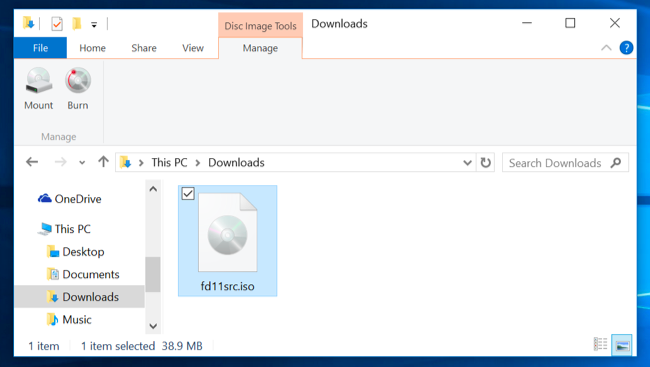

- #Mac os disk utility create cue file how to
- #Mac os disk utility create cue file mac os x
- #Mac os disk utility create cue file software
- #Mac os disk utility create cue file iso
- #Mac os disk utility create cue file windows
Hdiutil convert /tmp/tmp_ -format UDTO -o /tmp/tmp_iso.iso Hdiutil detach /Volumes/OS\ X\ Base\ System Rm /Volumes/OS\ X\ Base\ System/System/Installation/PackagesĬp -rp /Volumes/esd/Packages /Volumes/OS\ X\ Base\ System/System/InstallationĬp -rp /Volumes/esd/BaseSystem.chunklist /Volumes/OS\ X\ Base\ System/Ĭp -rp /Volumes/esd/BaseSystem.dmg /Volumes/OS\ X\ Base\ System/ Hdiutil attach /Applications/Install\ macOS\ Sierra.app/Contents/SharedSupport/InstallESD.dmg -noverify -nobrowse -mountpoint /Volumes/esdĪsr restore -source /Volumes/esd/BaseSystem.dmg -target /Volumes/iso -noprompt -noverify -erase Hdiutil attach /tmp/tmp_ -noverify -nobrowse -mountpoint /Volumes/iso Hdiutil create -o /tmp/tmp_iso.cdr -size 7316m -layout SPUD -fs HFS+J I don’t think I have any particular problems. However, since the folder structure from OS X 10.7 Lion to OS X 10.12 Sierra is different from 10.13 High Sierra or later, the commands are slightly different, but if you use the script on this page, that will also be supported. The spelling of the command changes depending on the OS version, making it difficult to understand, but what you are doing is simple. Restore the disk image loaded from the macOS installer into your working image file.Temporarily create a working image file.
#Mac os disk utility create cue file iso
On this page, instead of executing multiple commands in “Terminal” to create an ISO file, you can easily create an ISO file by copying and executing a “shell script”.Īlso, I actually checked the operation of the created all ISO files with VMware and VirtualBox.īy the way, what the “shell script” does is roughly as follows.
#Mac os disk utility create cue file software
Note: Parallels Desktop cannot create images of real diskettes.I think that the ISO file for macOS installation is often used with virtual environment software such as VMware and VirtualBox. With Parallels Desktop, you can also create an image of a blank floppy using Floppy Disk pane of the Virtual Machine Configuration dialog. Parallels Desktop supports floppy disk image files that have. Parallels Desktop treats floppy disk images like real diskettes. fdd extension connected to the virtual machine.
#Mac os disk utility create cue file mac os x
Note: DMG disk images made with Mac OS X Disk Utility are also supported by Parallels Desktop.

Parallels Desktop supports CD/DVD disc images in ISO, CUE, and CCD formats. If your host computer has a recordable optical drive, you can use it to burn CD or DVD discs in a virtual machine. Virtual machine can play back audio CDs without any limitations on copy-protected discs. Parallels Desktop has no limitations on using multisession CD/DVD discs. Parallels Desktop can access real CD/DVD discs and images of CD/DVD discs. Note: You cannot create snapshots or use the Undo Disks option for a virtual machine that uses the Boot Camp partition.
#Mac os disk utility create cue file windows
A Boot Camp Windows partition can be used as a bootable disk or as a data disk in Parallels virtual machines.
#Mac os disk utility create cue file how to
With Parallels Desktop, you can choose how to use your Boot Camp Windows XP or Windows Vista operating system: to boot in it natively (via Boot Camp) or in a virtual machine (via Parallels Desktop). A split disk is cut into 2 GB pieces and is stored as a single. Its size grows as you add applications and data to the virtual hard disk in the guest OS.Ī virtual disk of either format can be a single-piece disk or a split disk. Plain disks can be created with the help of New Virtual Machine assistant (the Custom mode.)Īn expanding virtual hard disk image file is stored on your host computer and is small initially. The size is determined when such a disk is created. When you create a virtual machine in Express Windows or Typical mode (in the New Virtual Machine assistant), the disk is created in the expanding format.Ī plain virtual hard disk image file is stored on your host computer and has a fixed size. Virtual hard disks can be of either plain, or expanding format. The capacity of a virtual hard disk can be set from 100 MB and up to 2 TB.

Parallels virtual machines can use either virtual hard disks or Boot Camp partitions as their hard disks. This section lists the types of disks that can be used by Parallels virtual machines and provides the information about basic operations that you can perform with these disks.


 0 kommentar(er)
0 kommentar(er)
